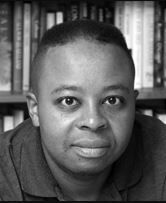What you may have forgotten about OJ Simpson and his trial
Published 10:20 am Friday, April 19, 2024

- Elwood Watson
For those too young to fully remember the OJ Simpson trial, it was a television spectacle with all the makings of a Hollywood blockbuster.
Sex and violence, interracial relationships and marriage, infidelity, alcoholism, sexual deviancy and a host of lurid details that titillated and fascinated the public. Stories covering the trial became daily tidbits, as just about every outlet – from weekly tabloids to highbrow magazines and newspapers – intensely covered the trial. You also had a real life cast of characters that would have been a fiction writer’s dream.
Trending
The strong, handsome, sex symbol former Hall of Fame athlete. The former beauty queen, blonde-haired, blued-eyed murdered wife. Her tall, dark and handsome murdered body builder friend. The blond-haired hedonistic beach boy. The Latin housekeeper. The Asian judge. The white/Jewish female prosecutor. The Black male prosecutor. The Black male defense attorney. The legendary WASP attorney. The Jewish defense attorney. The Black ex-wife and kids from his first marriage. Biracial kids from his second marriage. The white racist cop and police force.
It went on and on. A theater of the surreal.
The trial, like many other issues in America, exposed the large racial divide in our nation. The country was largely divided among racial lines, with 62 percent of whites believing Simpson was guilty of murder and 68 percent of Blacks feeling that he was innocent, according to a CNN poll conducted at the time. Charges that the defense team, lead by the late Johnnie Cochran, was playing the “race card” to Time magazine darkening Simpson’s face on its cover elicited outrage from certain segments of the Black community and further divided the public. The racial gulf remained after the trial.
Many white Americans were shocked and outraged by witnessing groups of blacks cheering the verdict. To many, such jubilation demonstrated a high level of callousness and indifference to the plight of two brutally murdered victims.
On the contrary, for many Black Americans, the verdict represented vindication from a justice system that had for so long mistreated and incarcerated so many Black people, who in a number of cases were unjustly prosecuted without probable cause. Simpson was probably an afterthought. The cheering was for how Johnnie Cochran, the Black lead defense attorney, so skillfully, eloquently and powerfully commanded that courtroom.
Once he was implicated in the murders of his ex-wife Nicole Brown Simpson and her body builder, waiter friend, Ronald Goldman, the once Black Prince Charming image Simpson worked so hard to cultivate quickly evaporated. The fact Nicole Brown Simpson was a blond haired, blue eyed former beauty queen intensified the hatred toward Simpson, particularly in racially-conscious social circles. Race did indeed matter!
Trending
It is very telling that many of Simpson’s critics (mostly White) who ruthlessly took him to task (and in my opinion, justifiably so) for two gruesome murders seemed to either overlook or ignore the fact that Claus Von Bulow, Robert Blake and several other White men were exonerated under similar circumstances. In the case of Von Bulow, he went on to appear on the cover of Vanity Fair and became a social fixture in New York society circles.
Both sides were passionate in their stances. However, most rational people know that Simpson was incarcerated in 2008 for nearly a decade, largely for failing to be convicted in 1995. The judge and predominately white jury in the second trial were determined to see Simpson face justice for what they saw as his failure to face consequences in his initial 1995 acquittal. Even most legal experts conceded as much, arguing that under normal circumstances, most people would have likely received less than three years or even probation for the sort of crime Simpson was involved in.
Moreover, anyone being honest with themselves knows that if Simpson had been accused of murdering his first wife, Marguerite Henry Simpson, a Black woman, the searing level of public outrage and craven level of print and electronic media coverage would not have been anywhere near as intense. I would argue that might have ended up a minor cover story in Jet or Ebony Magazine, and not much elsewhere. Such attitudes demonstrate that Black lives are too often of little significance to the larger society.
I was among those Black Americans, in the minority at the time, who felt Simpson was guilty. I still feel that way. That being said, from an intellectual standpoint, I could see why the jury came to the conclusion it did. The prosecution failed to prove its case beyond a reasonable doubt. Sometimes it’s just as simple as that.
Elwood Watson is a professor of history, Black studies, and gender and sexuality studies at East Tennessee State University. He is also an author and public speaker.

